| Strain Name | C57BL/6N-B2mtm2(B2M/HLA-A2.1/H2-D)Bcgen/Bcgen | Common Name | B-HLA-A2.1 mice |
| Background | C57BL/6N | Catalog number |
110110 |
|
Aliases |
HLA | ||
|
NCBI Gene ID |
12010 | ||
Protein expression analysis

Strain specific B2M and HLA expression analysis in homozygous B-HLA-A2.1 mice by flow cytometry. Splenocytes from both wild-type C57BL/6 (+/+) and homozygous B-HLA-A2.1 mice (H/H) were analyzed by flow cytometry. Mouse B2M and H-2Db were detectable in the wild-type C57BL/6 mice. Human B2M and HLA-A2.1 were only detectable in the homozygous B-HLA-A2.1 mice.

Strain specific B2M and HLA expression analysis in homozygous B-HLA-A2.1 mice by flow cytometry. Splenocytes from both wild-type C57BL/6 (+/+) and homozygous B-HLA-A2.1 mice (H/H) stimulated with anti-CD3ε in vivo, and analyzed by flow cytometry. Mouse B2M and H-2Db were detectable in the wild-type C57BL/6 mice. Human B2M and HLA-A2 were only detectable in the homozygous B-HLA-A2.1 mice.
Analysis of leukocytes cell subpopulation in spleen






Analysis of blood T cell subpopulations by FACS. Blood cells were isolated from female C57BL/6 and B-HLA-A2.1 mice (n=3, 8-week-old). Flow cytometry analysis of the blood cells was performed to assess leukocyte subpopulations. A. Representative FACS plots. Single live CD45+ cells were gated for TCRβ+ T cell population and used for further analysis as indicated here. B. Results of FACS analysis. The percent of Tregs in homozygous B-HLA-A2.1 mice were similar to those in the C57BL/6 mice. Percent of CD8+ T cells were significantly decreased while percent of CD4+ T cells were significantly increased, demonstrating that introduction of hB2M-HLA-A2.1-H-2D in place of mouse B2M may affected the development of CD8 + T cells, which in turn affected the proportion of T cell subtypes in blood. Values are expressed as mean ± SEM.
Peptide vaccines induced immune responses in B-HLA-A2.1 mice

Detection of vaccine-induced immune responses in B-HLA-A2.1 mice by IFN-γ ELISpot assay. Female B-HLA-A2.1 mice at the age of 9–10 weeks were divided into PBS group, Group 2 and Group 3 (n=2), and then inoculated PBS or vaccines at the inside muscle of both legs. Three weeks after the last immunization, mice were sacrificed. The splenocytes were extracted, stimulated with individual peptide or target-unrelated polypeptide as negative control (NC) or anti-CD3 as positive control, and then measured for IFN-γ secretion. No significant difference in body weight among groups (Data was not shown). (A) Representative results showing stimulation of splenocytes harvested from immunized mice with negative control, or peptide vaccines, or positive control in duplicates. (B) Summary of results. The results demonstrate that B-HLA-2.1 mice provide a powerful preclinical model for in vivo evaluation of vaccines. NC: negative control. V1: the first peptide vaccine to be evaluated.
Peptide vaccines induced immune responses in B-HLA-A2.1 mice

Detection of vaccine-induced immune responses in B-HLA-A2.1 mice by IFN-γ ELISpot assay. Male B-HLA-A2.1 mice at the age of 9–10 weeks were divided into PBS group and NY-ESO-1 group (n=3), and then inoculated PBS or vaccines at the inside muscle of both legs. One week after the last immunization, mice were sacrificed. The splenocytes were extracted, stimulated with individual peptide or target-unrelated polypeptide as negative control (NC) or PMA/Ionomycin as positive control, and then measured for IFN-γ secretion. No significant difference in body weight among groups (Data was not shown). (A) Representative results showing stimulation of splenocytes harvested from immunized mice with negative control, or peptide vaccines, or positive control in duplicates. (B) Summary of results. The results demonstrate that B-HLA-2.1 mice provide a powerful preclinical model for in vivo evaluation of vaccines. NC: negative control. PC: positive control.

Antitumor effect of WT1-Db126 against B-HLA-A2.1/WT1 MC38 tumor cells

Anti-tumor effect of NY-ESO-1 peptides against B-HLA-A2.1/hNY-ESO-1 MC38 tumor cells

Antitumor activity of NY-ESO-1 peptides against syngeneic tumors. (A) Experimental scheme. (B) Antitumor activity of prophylactic treatment with NY-ESO-1 peptides. B-HLA-A2.1 mice (n=6 or 8/group) were vaccinated with PBS or NY-ESO-1 peptides(300 µg). Three weeks after the last immunization, B-HLA-A2.1/hNY-ESO-1 MC38 cells were inoculated into the right flank of the mice. (C) Body weight changes during treatment. As shown in panel B, NY-ESO-1 peptides were efficacious in controlling tumor growth in B-HLA-A2.1 mice, demonstrating that the B-HLA-A2.1 mice provide a powerful preclinical model for in vivo evaluation of vaccines. Values are expressed as mean ± SEM.
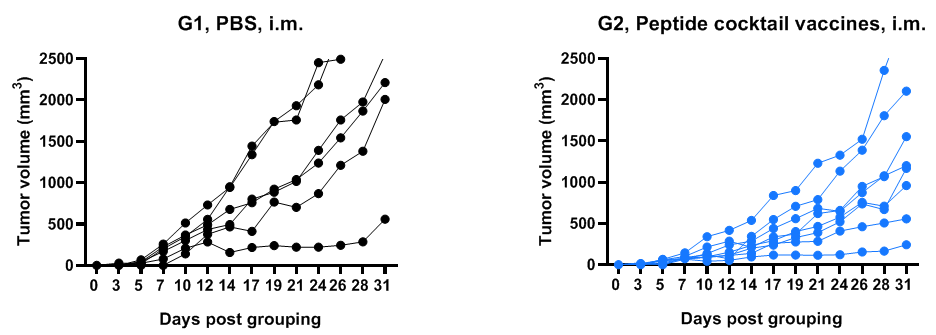
Antitumor activity of NY-ESO-1 peptides against syngeneic tumors. B-HLA-A2.1/hNY-ESO-1 MC38 tumor cells growth of individual mouse.
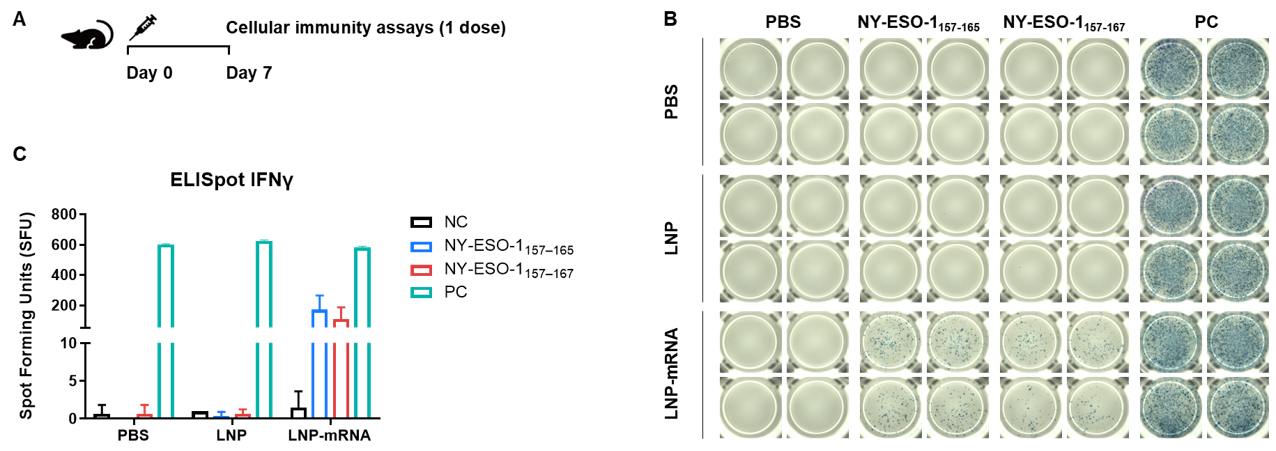
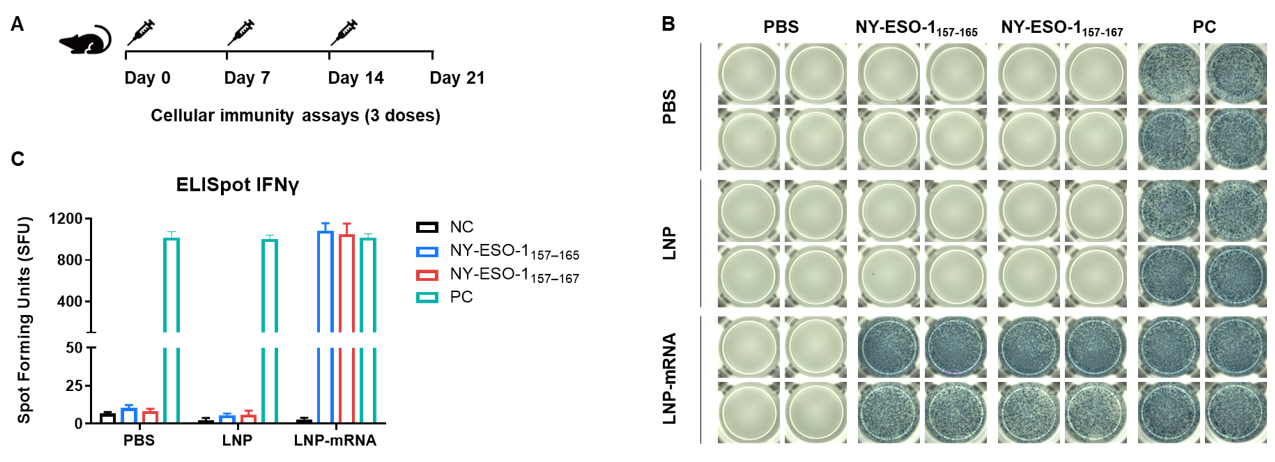


Antitumor activity of mRNA against syngeneic tumors. B-HLA-A2.1/hNY-ESO-1 MC38 tumor cells growth of individual mouse.

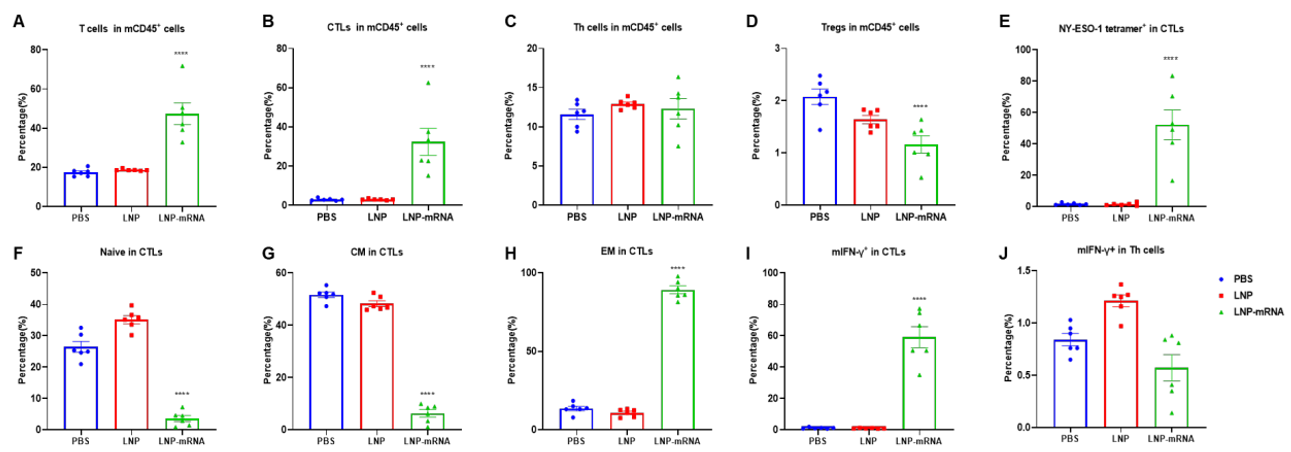

Anti-tumor effect of mRNA against B-HLA-A2.1/hWT1 MC38 tumor cells


Antitumor activity of mRNA against syngeneic tumors. B-HLA-A2.1/hWT1 MC38 tumor cells growth of individual mice.
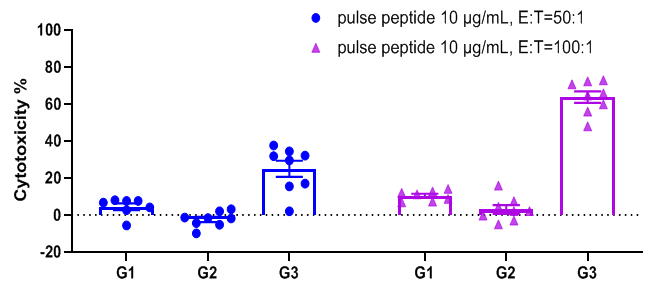
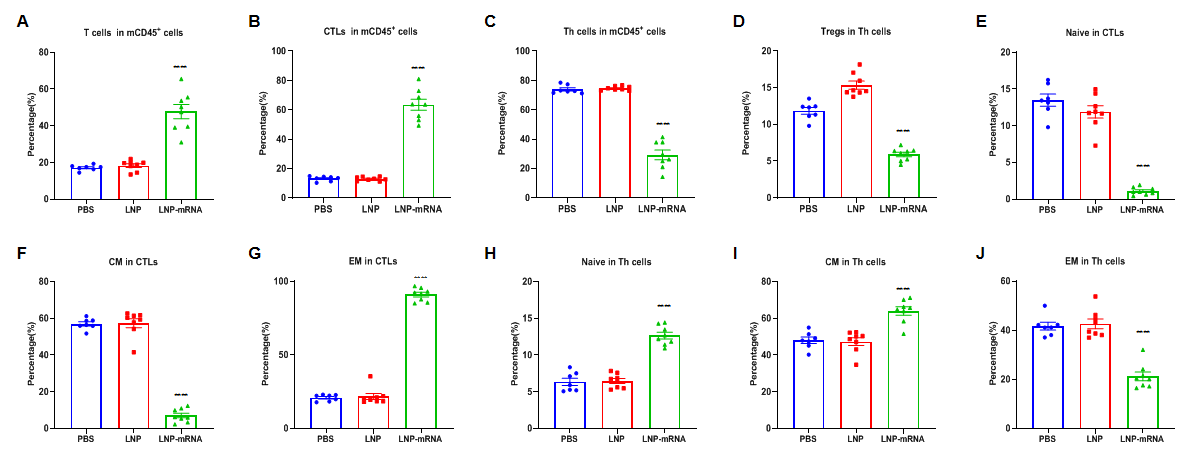
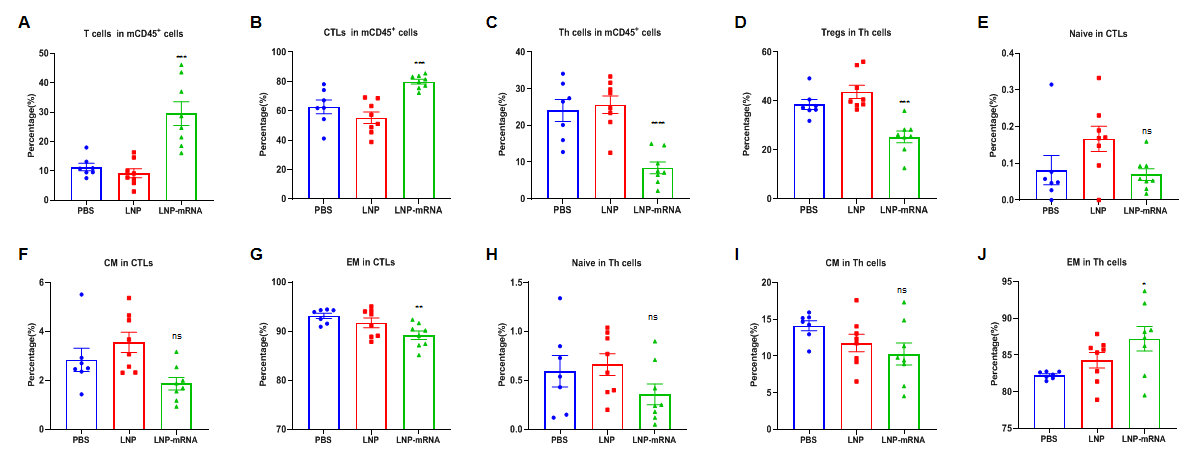
LNP-mRNA enhances beneficial repertoire of anti-tumor T cells. Tumors from B-HLA-A2.1/hWT1 MC38 tumor-bearing mice that were immunized with the PBS, empty LNP or LNP-mRNA were analyzed on day 28. Analysis of CD8+T, CD4+ T and Treg cells in the tumors determined by the flow cytometric assay. For tumor-infiltrated T(A) and CD8+T cells(B), the percentage(in CD45+ cells) were significantly elevated. In contrast, the frequencies of Tregs was significantly diminished in LNP-mRNA group(D). Tumor-infiltrated effector memory(EM) CD4+T cells was increased significantly(J).
Anti-tumor effect of mRNA against B-HLA-A2.1/hGP100 MC38 tumor cells

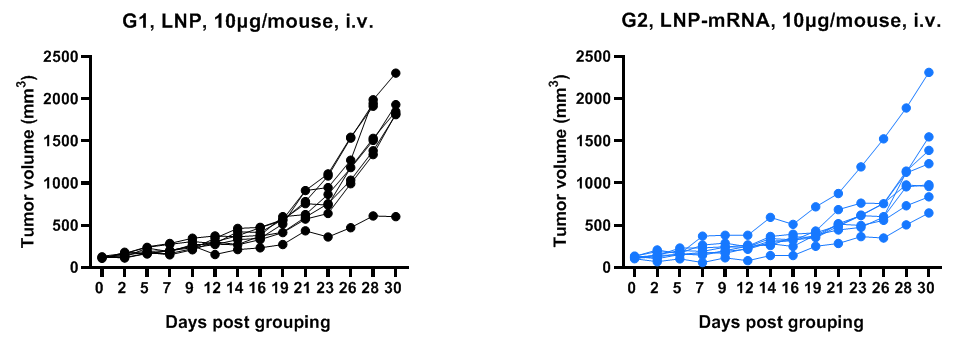
Antitumor activity of mRNA against syngeneic tumors. B-HLA-A2.1/hGP100 MC38 tumor cells growth of individual mice.
When using the B-HLA-A2.1 mouse strain in a publication, please indicate the originate from Biocytogen and stock #110110 in your Materials and Methods section.






 +86-10-56967680
+86-10-56967680 info@bbctg.com.cn
info@bbctg.com.cn